CyberSitter
CyberSitter Removal Guide
What is CyberSitter?
CyberSitter is a suspicious security program that is not worth to trust for virus removal
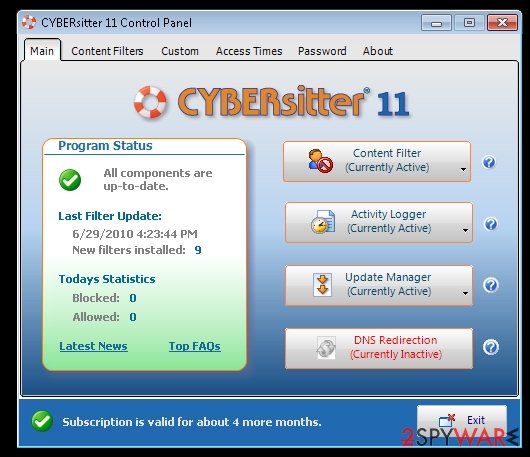
CyberSitter (can also be found as CyberSitter 10.0, CyberSitter 11, etc.) is another corrupt security tool that promises to remove all kinds of viruses from the system. If you think that you should buy its “full” version for getting the ability to remove bad files, malicious programs, and similar things from your computer, you should stop doing so because this program seeks the only thing – steal the money from its victims.
After displaying invented system scanners and fake scan results, this program offers for its victim to buy its licensed version and fix the system. However, after entering your credit card details and other financial information, you can easily find out that you were scammed.
You may have already heard the name of this virus. If the name of these threats sounds familiar, then you are thinking about the commercial keylogger, which was named exactly the same as this malware. This virus is used for giving the attacker ability to monitor the victim and his/her activity on the Internet.
This virus can easily steal financial information and similar data, so you should never keep it on your machine. If you want to double-check your PC system and make sure that it is free of CyberSitter rogue anti-spyware or CyberSitter keylogger, you should waste no time and scan it with a program like FortectIntego or SpyHunter 5Combo Cleaner.
Only a full system scan with any of these programs can help you to fix your computer and avoid the loss of your sensitive information and money.
Cyber Sitter may trick the user and look like a legitimate program
There are lots of discussions about CyberSitter. Some people believe that it's harmless, others think that it has been causing havoc on their computers. However, no matter how trustworthy it looks, you should keep in mind that this program just pretends to be a reputable anti-spyware that is capable of detecting all viruses and eliminating them from the system.
In reality, it was created just for trying to trick people into falling for its poorly-designed alerts that report about invented viruses. After doing so, it expects to trick them into deciding to purchase its licensed version.
Please, do NOT pay for this suspicious app!
If you’re about to buy a full version of CyberSitter, think for a moment. First of all, can you remember how it appeared on your computer? There is a huge possibility that you have no idea how this program entered your machine. That's because Cyber Sitter is spread thru spam, misleading emails, and similar means of distribution.
Keep in mind that every program, which is distributed using such techniques, shouldn’t be trusted!
Remove CyberSitter virus by following these guides
CyberSitter is one of those malware that reports about lots of invented viruses seeking to trick users into believing that they are infected. However, the only one problem is the Cyber Sitter itself, so you should remove it without a delay. Use the manual instructions given below or trust an antivirus like SpyHunter 5Combo Cleaner. You should consider making a scan with FortectIntego too, it may fix the corrupt files that were affected by this virus and improve the computer performance.
Beware that it can cause the system to slow down and can also limit your internet connection. In order to remove this malware from your computer, you should run a full system scan and your computer will work again as it was before the virus's appearance.
Getting rid of CyberSitter. Follow these steps
Manual removal using Safe Mode
Important! →
Manual removal guide might be too complicated for regular computer users. It requires advanced IT knowledge to be performed correctly (if vital system files are removed or damaged, it might result in full Windows compromise), and it also might take hours to complete. Therefore, we highly advise using the automatic method provided above instead.
Step 1. Access Safe Mode with Networking
Manual malware removal should be best performed in the Safe Mode environment.
Windows 7 / Vista / XP
- Click Start > Shutdown > Restart > OK.
- When your computer becomes active, start pressing F8 button (if that does not work, try F2, F12, Del, etc. – it all depends on your motherboard model) multiple times until you see the Advanced Boot Options window.
- Select Safe Mode with Networking from the list.
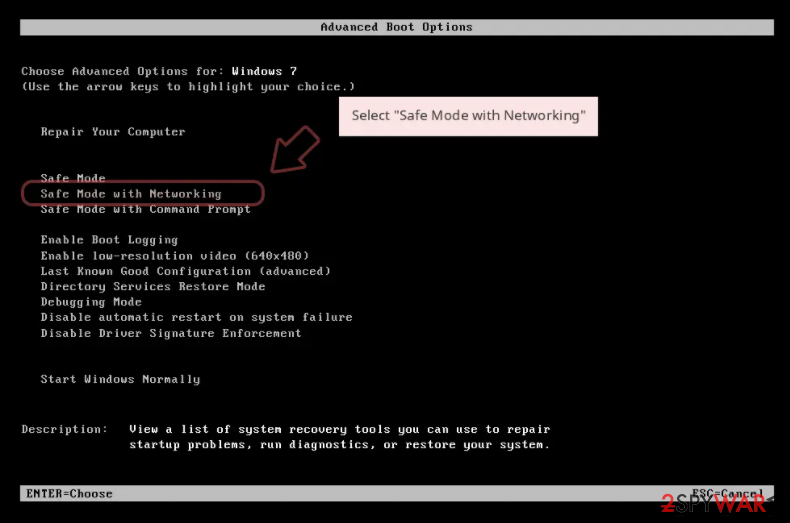
Windows 10 / Windows 8
- Right-click on Start button and select Settings.
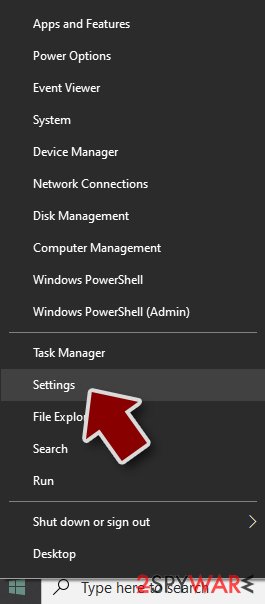
- Scroll down to pick Update & Security.
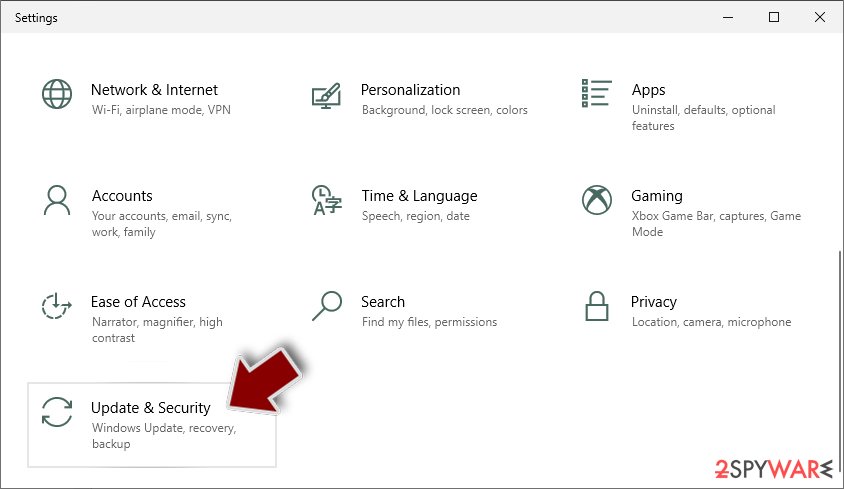
- On the left side of the window, pick Recovery.
- Now scroll down to find Advanced Startup section.
- Click Restart now.
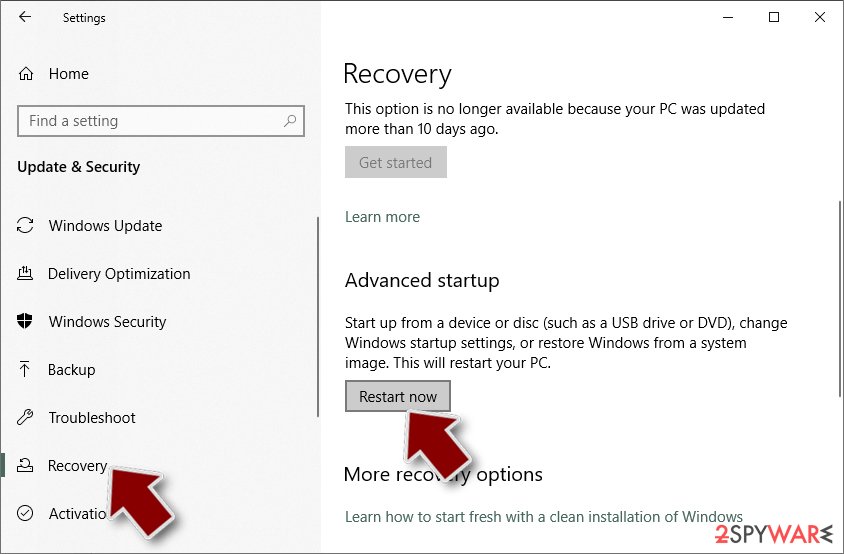
- Select Troubleshoot.
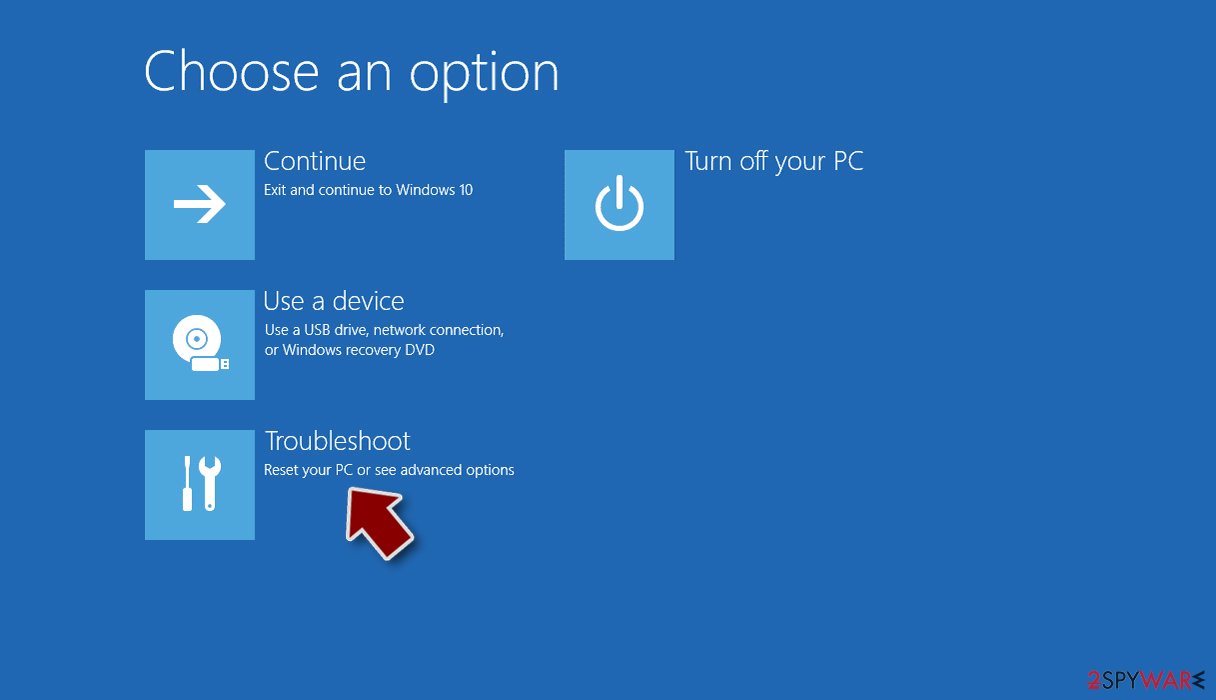
- Go to Advanced options.
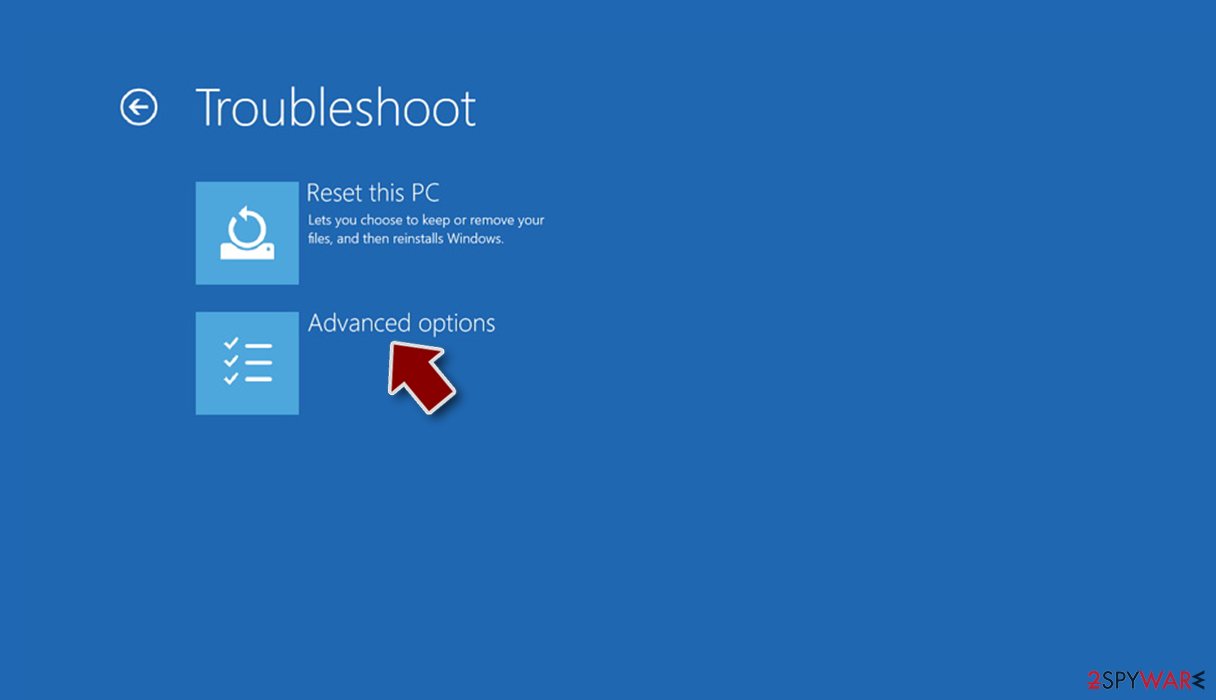
- Select Startup Settings.
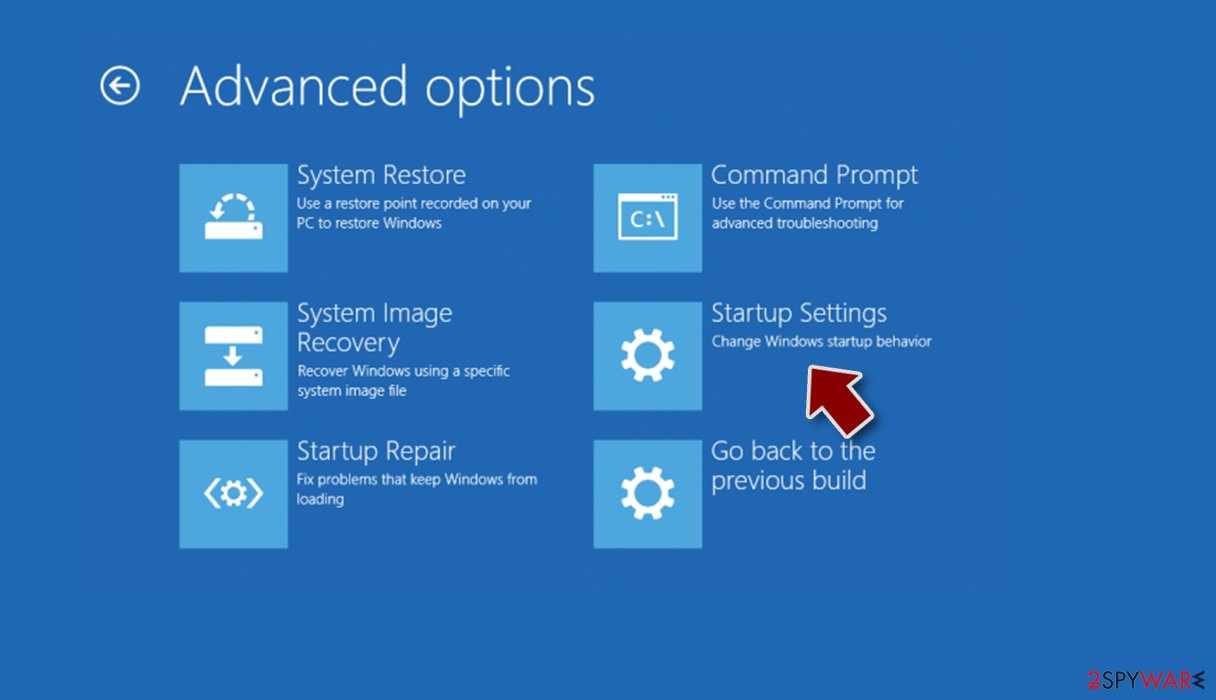
- Press Restart.
- Now press 5 or click 5) Enable Safe Mode with Networking.
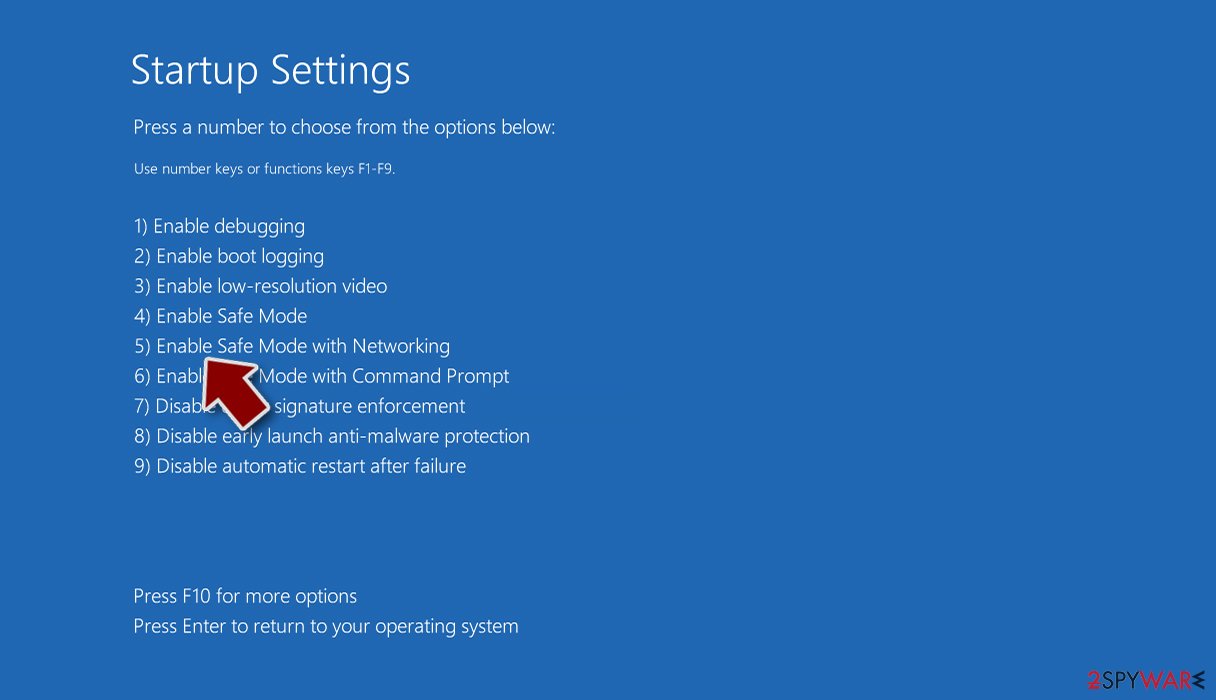
Step 2. Shut down suspicious processes
Windows Task Manager is a useful tool that shows all the processes running in the background. If malware is running a process, you need to shut it down:
- Press Ctrl + Shift + Esc on your keyboard to open Windows Task Manager.
- Click on More details.
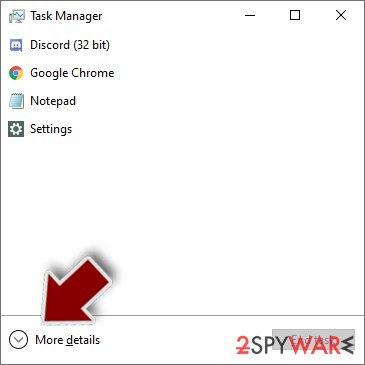
- Scroll down to Background processes section, and look for anything suspicious.
- Right-click and select Open file location.
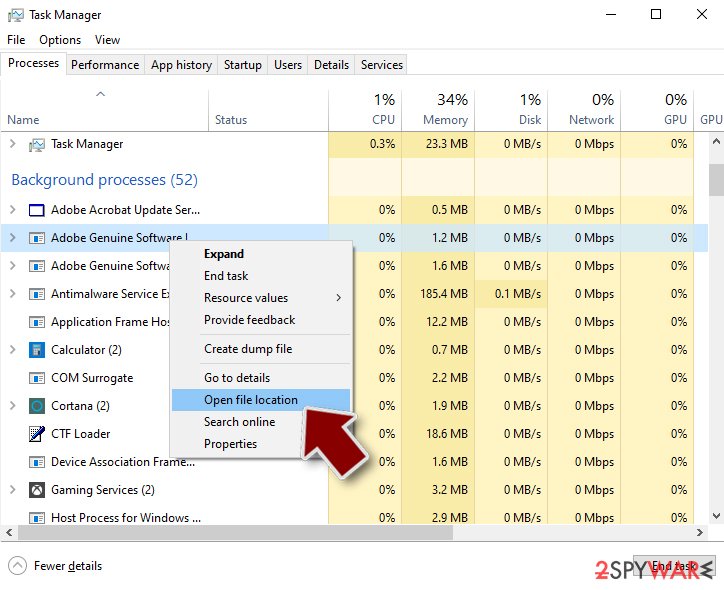
- Go back to the process, right-click and pick End Task.
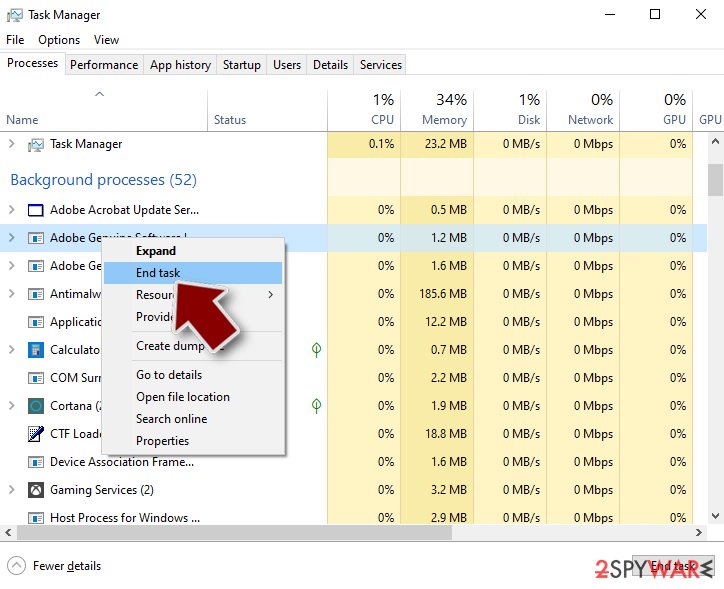
- Delete the contents of the malicious folder.
Step 3. Check program Startup
- Press Ctrl + Shift + Esc on your keyboard to open Windows Task Manager.
- Go to Startup tab.
- Right-click on the suspicious program and pick Disable.
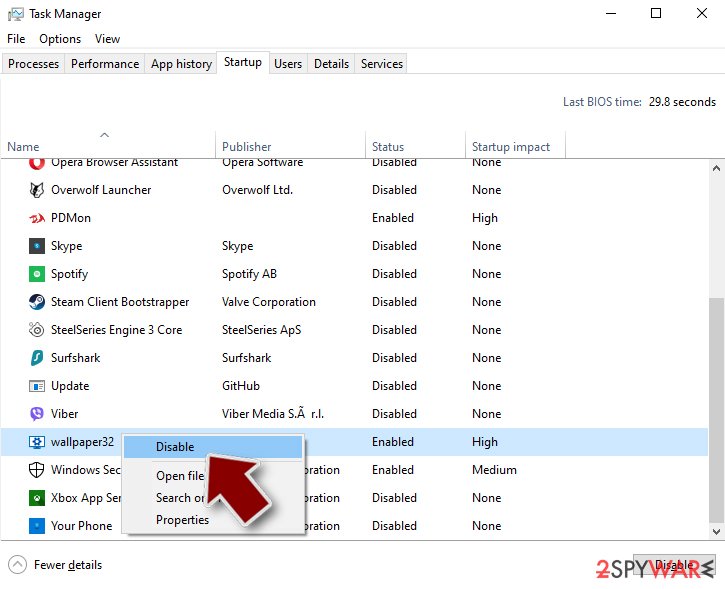
Step 4. Delete virus files
Malware-related files can be found in various places within your computer. Here are instructions that could help you find them:
- Type in Disk Cleanup in Windows search and press Enter.
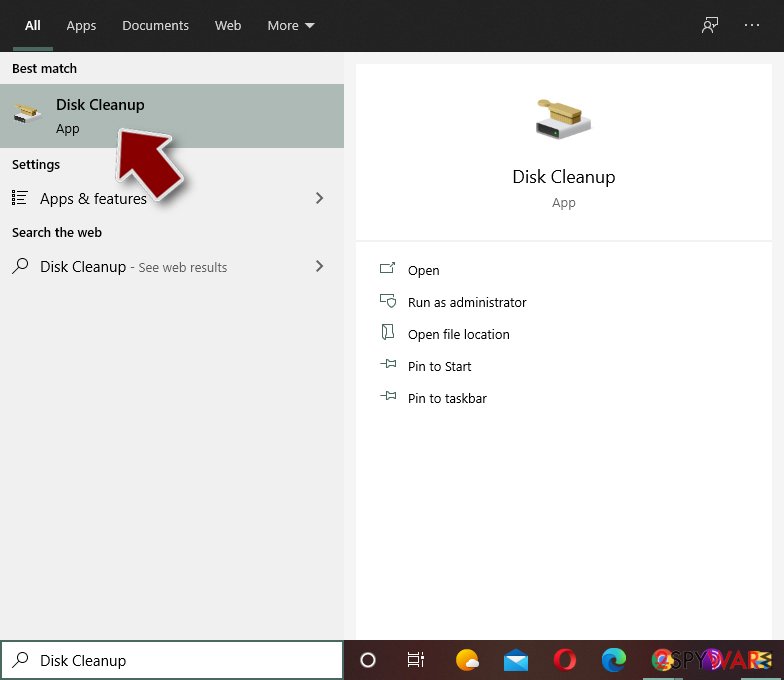
- Select the drive you want to clean (C: is your main drive by default and is likely to be the one that has malicious files in).
- Scroll through the Files to delete list and select the following:
Temporary Internet Files
Downloads
Recycle Bin
Temporary files - Pick Clean up system files.
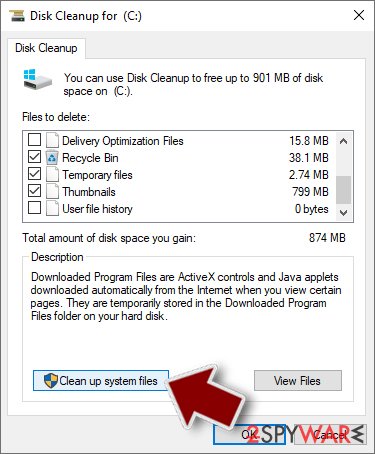
- You can also look for other malicious files hidden in the following folders (type these entries in Windows Search and press Enter):
%AppData%
%LocalAppData%
%ProgramData%
%WinDir%
After you are finished, reboot the PC in normal mode.
Remove CyberSitter using System Restore
-
Step 1: Reboot your computer to Safe Mode with Command Prompt
Windows 7 / Vista / XP- Click Start → Shutdown → Restart → OK.
- When your computer becomes active, start pressing F8 multiple times until you see the Advanced Boot Options window.
-
Select Command Prompt from the list

Windows 10 / Windows 8- Press the Power button at the Windows login screen. Now press and hold Shift, which is on your keyboard, and click Restart..
- Now select Troubleshoot → Advanced options → Startup Settings and finally press Restart.
-
Once your computer becomes active, select Enable Safe Mode with Command Prompt in Startup Settings window.

-
Step 2: Restore your system files and settings
-
Once the Command Prompt window shows up, enter cd restore and click Enter.

-
Now type rstrui.exe and press Enter again..

-
When a new window shows up, click Next and select your restore point that is prior the infiltration of CyberSitter. After doing that, click Next.


-
Now click Yes to start system restore.

-
Once the Command Prompt window shows up, enter cd restore and click Enter.
Finally, you should always think about the protection of crypto-ransomwares. In order to protect your computer from CyberSitter and other ransomwares, use a reputable anti-spyware, such as FortectIntego, SpyHunter 5Combo Cleaner or Malwarebytes
How to prevent from getting malware
Choose a proper web browser and improve your safety with a VPN tool
Online spying has got momentum in recent years and people are getting more and more interested in how to protect their privacy online. One of the basic means to add a layer of security – choose the most private and secure web browser. Although web browsers can't grant full privacy protection and security, some of them are much better at sandboxing, HTTPS upgrading, active content blocking, tracking blocking, phishing protection, and similar privacy-oriented features. However, if you want true anonymity, we suggest you employ a powerful Private Internet Access VPN – it can encrypt all the traffic that comes and goes out of your computer, preventing tracking completely.
Lost your files? Use data recovery software
While some files located on any computer are replaceable or useless, others can be extremely valuable. Family photos, work documents, school projects – these are types of files that we don't want to lose. Unfortunately, there are many ways how unexpected data loss can occur: power cuts, Blue Screen of Death errors, hardware failures, crypto-malware attack, or even accidental deletion.
To ensure that all the files remain intact, you should prepare regular data backups. You can choose cloud-based or physical copies you could restore from later in case of a disaster. If your backups were lost as well or you never bothered to prepare any, Data Recovery Pro can be your only hope to retrieve your invaluable files.







